And Never Let Her Go Read online
Page 3
Downtown Wilmington was the center of the world for business and shopping, before shopping malls and suburban sprawl took over and left even the grand old Wanamaker’s department store an empty shell. After the Second World War, Wilmington changed, along with the rest of the country; cities all over America did. And some families would bloom while others faded.
THE Irish and the Italians contributed greatly to the abundant traditions that make Wilmington such a remarkably alive city, full of celebration and mourning, passion and rumor. The annual St. Anthony’s festival in June attracts almost everyone in the city; there they eat meatball sandwiches, sausage and greens, drink beer and wine, listen to music, and catch up with old friends. It is a festival where they can go every year and know they will find people they have lost touch with.
The Friends of Ireland St. Patrick’s Day dinner is another big draw, although it’s considerably more sedate. In the fifties, Lucy and Walter Brady and their friends wanted to change the stereotyped image of the Irish as mill hands and blue-collar workers who spent St. Patrick’s Day sitting in bars and getting drunk. The Bradys initiated the grand St. Patrick’s Day dinner, an opulent feast in the Gold Ballroom of the Hotel du Pont. The local Catholic and Episcopal bishops, along with the governor of Delaware, the mayor of Wilmington, and every other important political figure, were present. Dancers from the McAleer School of Irish Dance entertained a crowd dressed in their finest.
One of the couples who faithfully attended the St. Patrick’s Day dinner was Robert Fahey and his wife, Kathleen. Ex-mayor Bill McLaughlin, over eighty now, recalled how the Faheys met and fell in love. Sitting on his favorite stool at O’Friel’s Pub, McLaughlin smiled as he remembered. “Anne Marie used to say to me, ‘If it weren’t for you, I wouldn’t be here now,’ and I guess that’s true—I introduced her parents.
“Robert Sr. was a handsome young man, a salesman for IBM, as I recall, and he came calling to the DuPont plant in the early fifties,” McLaughlin said. “Kathleen was working as a secretary in the chemical division, and he saw her there, and he thought she was the most beautiful girl he’d ever seen. She was a very pretty girl. He asked me to introduce him, and I did.”
Kathleen’s parents were both born in Ireland, and she had a soft brogue herself. It only made her more attractive. She was eight years younger than Robert, who was thirty.
“They got married in about 1953, and they had good years,” McLaughlin recalled. “Really good years . . .”
For a while there were abundant and happy years. The Faheys bought a new house in McDaniel Crest, a neighborhood close by State Road 202—the Concord Pike—in north Wilmington. In the postwar building boom, whole streets of houses were sprouting up overnight there on acreage that had long been farmland owned by the Weldin and Talley families. The Faheys’ first house was small, a little over sixteen hundred square feet. It was more than adequate at first, but it soon seemed to shrink, as their children came along.
Robert switched to selling insurance. With his natural charm, he could sell anything. Kathleen stayed at home as most young wives did in the fifties. They had six children in a dozen years: Kevin first, in 1954, Mark in 1956, Robert Jr. in 1958, Kathleen in 1960, Brian in 1961, and the baby, Anne Marie Sinead Fahey, in 1966.
“Most of us kids were two years apart,” Robert Jr. would remember. “Our house wasn’t that big, and it seemed like there was never enough money.”
Lucy and Walter Brady, strong proponents of preserving Irish heritage, met the young Fahey family through their friends the Whalens; all of them were interested in honoring their Irish roots, and Robert and Kathleen were enthusiastic about a program Lucy and Walter helped organize to bring Irish schoolteachers to America for a summer’s visit. During the hot and humid Delaware summers, Robert and Kathleen opened their home to a number of the teachers from Ireland.
The Faheys had a good time together. They attended church faithfully for twelve years at St. Mary Magdalen Church on Concord Pike, and Kathleen tried to plan picnics and outings, always with a bunch of kids with curly heads bobbing in the backseat. If there was any precursor of trouble, it was Robert’s problem with alcohol; if he was not an alcoholic yet, he had most of the danger signs. Kathleen tried to cope with it. At first his drinking didn’t interfere with his job or with the family. They loved each other still, and their children were all exceptionally bright and attractive.
The five or more years between her siblings and little Anne Marie—or Annie, as they called her—put them virtually in different generations when they were children. Annie was a beautiful baby with huge blue eyes and a rollicking laugh that seemed too big for such a tiny girl, and her siblings and their friends made a fuss over her because she was the baby, probably the last Fahey baby.
When Anne Marie was born, on January 27, 1966, her mother, Kathleen, was almost thirty-six. The two of them were very close, partly because Kathleen’s older five went off to school every day, and she and her baby girl were home together. It was natural that Anne Marie would form a special bond with her mother, even after she too started at Alfred I. du Pont elementary school. They were very much alike, both pretty and full of life and humor, both with a laugh you could hear a block away.
Kathleen was very protective of Annie, maybe because she was the baby. She was an exceptionally pretty little girl with her beautiful eyes, a spattering of freckles, and dark golden hair. Brian and Kathleen were ten and eleven, and their mother made them promise to hold Annie’s hand on the way home from school—not only across the busy Concord Pike but all the way home. They hated that, but they did it. For extra protection, their mother always let their dog, Butch, out so he could be waiting on the corner to see them home safely.
Rather than say all six of their names when she referred to them, Kathleen had long since divided her children into two groups: Kevin, Robert, and Mark were “the three boys,” and Brian, Kathleen, and Annie were “the little ones.” Theirs was a safe, warm circle, with their mother the center of their lives; and then everything changed for the Faheys in 1974. Kathleen Fahey became ill with symptoms that seemed innocuous enough at first—but which got steadily worse. Unbelievably, tragically, she was diagnosed with lung cancer. She was just in her early forties, and she still had five children at home to raise. Only Kevin, who was twenty, had left.
Anne Marie was eight, and too young to understand how sick her mother was. She knew that she went to the doctor a lot and sometimes was confined in the hospital for a day or two, but her mother always came home, each time a little thinner and paler. Family and friends helped with meals and took care of the children when Kathleen was too weak to do it. Anne Marie was still cosseted in the bosom of the family she had always known, and she was a happy little girl.
Toward the end, Kathleen Fahey was in the hospital for almost two weeks before she was allowed to come home. And then she lay in bed all day, forcing a smile when her children tiptoed into her room. Of all of them, only Anne Marie seemed unaware that her mother had come home to die. No one realized that their little sister was worrying in silence. She asked her best friend, Beth Barnes, if her mother was going to die, and the two little girls tried to reassure each other that, of course, mothers didn’t die and leave their children.
But on the gray day of March 16, 1975, Kathleen Fahey did die. Her older daughter and namesake, Kathleen, was fourteen, and would remember that day twenty-four years later: “The day that my mother died, our universe fell out from [under] us.”
Anne Marie was two months past her ninth birthday when she lost her mother. Her father didn’t want her to see her mother’s body being carried from the house, so her uncle James, a Catholic priest, hurriedly took Anne Marie aside and tried to distract her long enough for the hearse from Mealey’s to carry her mother away. As a priest, he had spent most of his life comforting the bereaved, but it was a terrible thing for him to accept that his sister, so young, was dead, leaving the little girl behind.
Ann Marie’s brother Bri
an, who was thirteen when their mother died, has always believed that for a long time Anne Marie didn’t realize their mother wasn’t coming back. As her funeral arrangements were being made, the older children huddled upstairs. “The next day, none of us went to school,” Brian said. “But you know, she was outside playing with her friends like it was just a normal day. So I don’t think she understood.”
Whether she grasped it or not, Anne Marie had just suffered a loss so profound that it would change the course of her life, casting a shadow over a future that had held so much promise. The changes would be subtle at first, at least for a nine-year-old girl, but the pain was already deeply ingrained. When she went back to school, the teacher made an announcement to the class that mortified her: “Anne Marie’s lost her mother. Be nice to her.”
Beth Barnes, who would remain Anne Marie’s best friend for many years, recalled that she didn’t want anyone to talk to her about her mother or ask her questions. “I remember how scared she was that we would look at her weird.”
Jennifer Bartels was in Anne Marie’s class, too, and she and Beth tried to make things better for her. Like Beth, Jennifer would always be in Anne Marie’s life and always be her friend.
All of the Fahey children grieved for their mother, then watched their lives metamorphose from a secure middle-class existence to desperate circumstances, in which they would often go hungry. For as long as they could, her sister and brothers tried to keep Anne Marie safe from the bleak realities of their situation. They loved her as siblings, but as time went on, they became almost parent figures, too.
Robert Sr. was bereft without Kathleen. He had lost his anchor, the one person in the world who might have been able to keep him from drinking. The hold alcohol had always had over him grew more tenacious, and he was bitter, sure that life had been so unfair to him that no one could blame him for finding solace in a bottle. He worked less and less; he didn’t have the heart to convince other families that they needed to prepare for illness, death, and loss of wages with the judicious choice of life insurance policies, when his own family had been shattered.
The older Fahey children ranged in age from Kevin at twenty-one to Brian at thirteen and they could take care of themselves, although they all were coping with not only the loss of their mother but also the end of their family as they had known it. But Anne Marie was only nine; in a sense, she had lost the most.
With their mother gone, her mother, their grandmother Katherine McGettigan, did her best to help. If only she could have, she would have taken them to live with her, but she had been a widow for over twenty years and had to work hard for her own living. She always had. Along with her brothers, James and Jack, Katherine grew up on a hardscrabble farm in Ireland—a place with five horses, a cow, and an acre of land that gave of itself grudgingly. In America, she had gone to work as a maid and a cook.
Katherine lived in Media, Pennsylvania, and she came down to Wilmington once a week to clean and cook for her grandchildren. The Fahey children called her Nan, and less often, Kate. She had worked for some very wealthy families and learned a lot about the niceties of life. She taught Kathleen and Anne Marie how to survive the humid summer nights without air-conditioning by powdering their sheets. Anne Marie faithfully poured talcum powder in her bed, convinced that she really did feel cooler. She would also remember how Nan told her it was important to have a pretty bed, and she dreamed that one day she would have flowered bedspreads and ruffled pillows.
Nan wasn’t the cuddly kind of grandmother, and it was just as well. She taught her six grandchildren how to survive in a world where they were virtually on their own. She taught them to be doers who would get out there and make a place for themselves in the world, whatever fate or luck handed them.
“She had great internal strength,” Robert Jr. recalled. “She was very shy and very stern, a little like the nuns who were our teachers, but we always knew what to expect from her. We had other adults in our lives who were variable, but Nan was predictable and we could count on her. She taught us a strong work ethic.”
In her later years, Katherine McGettigan’s job was as a meat wrapper at the A&P supermarket. She was on her feet all day, but the pay was better than she had ever known. Even though she couldn’t move the Fahey children into her house in Media, they always knew she was available to them. She had Robert over for dinner every Wednesday night, and Kevin came on Sundays. For lonely boys at college, it meant a lot. Nan made special times for all of her grandchildren, and worried the most about little Annie.
To fill the gaps of what Nan could not do, young Kathleen tried her best to take her mother’s place. “I think the tragic loss of our mother brought us closer in a lot of ways, but it was a very turbulent time,” she said. “I was fourteen, and I assumed some of the mothering role, and I was ill equipped to handle the responsibility. And there were times that I’m not proud of, but it was just a very difficult time, and I think that anger with the situation we were in—we took it out on each other, because there was no one else around.”
Anne Marie would remember that in one tussle with Kathleen, her sister stuck the vacuum cleaner so close to her long wavy hair that the suction drew strands of it painfully into the metal tube and they had a hard time untangling it. It was the kind of thing that happens when siblings get on each other’s nerves—only there was nobody there to step in and play referee. There was no one to look after them.
Most of the time, Anne Marie and Kathleen got along as well as any sisters six years apart would; Kathleen called Anne Annie, and Anne Marie called Kathleen Cass or Kate. Sometimes names in the Fahey family could be confusing because so many of their first names had come down from prior generations.
There always seemed to be someone who tried to help the young Faheys, although their new existence was a pale imitation of the home that their mother had made for them. The Irish community included them in many activities. Along with all of her siblings, Anne Marie took Irish dancing lessons, and one of the other families who took lessons, the Mulherns, had seven children. The first summer after her mother died, Anne Marie visited often with the Mulherns.
“She would go over there for maybe five or six days in a row,” Brian recalled, “and then come back for a couple, and that went on all summer.”
With seven children already running through the house, one lonely little girl didn’t make that much difference, and the family’s hospitality was a godsend. Even so, Anne Marie must have begun to see the difference between those who had a real home and children like herself and her siblings, who lived on the edges of other people’s lives.
Things at the Fahey house continued to crumble, despite the efforts of the older children to help out. The McDaniel Crest house was among the first things to go, but with help from friends they moved to a bigger house on Nichols Avenue shortly after their mother died.
There were so many things that a family with six children needed, and they all were determined to get an education. But Robert Sr. had come to a point where he wasn’t working at all. Their only real income came from insurance payments and pension plans he had purchased in better days. Those would not last forever.
The mortgage payments were still due every month, and so were other bills, for utilities and groceries and clothing. Robert Fahey seemed simply to have given up. Concerned friends and family members continued to help out, thinking that surely he would get himself together before he lost everything.
Chapter Two
THE IRISH MIDDLE-CLASS community in Wilmington had burgeoned in the fifties and sixties—as had the Italian. It was a splendid time, with opportunities for everyone willing to grasp them. Robert Fahey Sr. had done well until he was too overwhelmed with grief and the responsibility of six children to reach out. Louis J. Capano Sr. was a few years older than Robert Fahey, a family man too, but fortune had been kinder to him. As the Faheys faltered, the Capanos were thriving.
Louis Capano Sr. was born in a tiny mountain village in Calabria, Italy, in 1
923. After his parents emigrated to Delaware in 1930, Louis and his brothers, Frank and Vincent, grew up in a whole new world. Joseph Capano, their father, was a bricklayer, and there was plenty of work for a man with his skills, even in the depths of the Depression. The young Capano family settled in New Castle, a few miles south of Wilmington on the Delaware River. Their relatives the Rizzos had a little construction business there and welcomed them. New Castle is the oldest town in America, where even today the cobbled streets and old houses that seem to lean together for support give the impression of stepping back in time hundreds of years. The Capanos lived, however, in a working-class part of town.
Immigrants from Calabria were sometimes looked down upon by other Italians who had come to America. When they heard that someone was calabrese, first-generation Italians from other regions often raised their eyebrows and made the deprecating gesture of a knife across their necks. Calabrese were said to be a hardheaded and stubborn bunch, and some said they were cutthroats. The Capanos, like most Calabrese, were stolid, hardworking, and clannish with family: they ignored the prejudice and set their minds to succeeding in America. Each Capano son chose a trade; Frank became a bricklayer like his father, Vincent a plumber, and Louis a carpenter. Louis was required to serve as an apprentice for four years before he could join the union, and then was hired by the Canterra Construction Company, working long hours summer and winter.
Family lore has it that Louis’s first job was to build an outhouse, and that he was proud to do it. He was a short, solidly built man who took great pride in his workmanship. Early on, he was known for his honesty and his desire to do a job to the satisfaction of his foreman—and later, for his own customers. He didn’t have a particularly good head for business; he was, instead, an artisan, who loved to see the perfect curve of a banister, the seamless appearance of dovetailed boards.

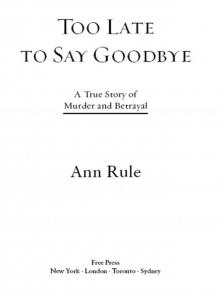 Too Late to Say Goodbye: A True Story of Murder and Betrayal
Too Late to Say Goodbye: A True Story of Murder and Betrayal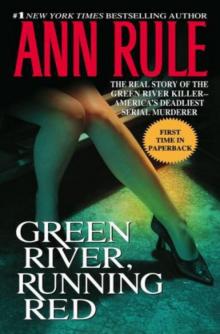 Green River, Running Red
Green River, Running Red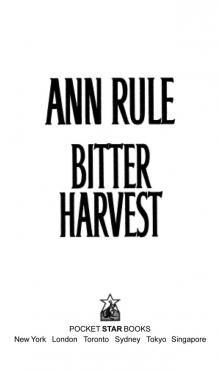 Bitter Harvest
Bitter Harvest Dead by Sunset: Perfect Husband, Perfect Killer?
Dead by Sunset: Perfect Husband, Perfect Killer?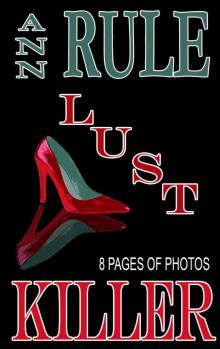 Lust Killer
Lust Killer And Never Let Her Go: Thomas Capano: The Deadly Seducer
And Never Let Her Go: Thomas Capano: The Deadly Seducer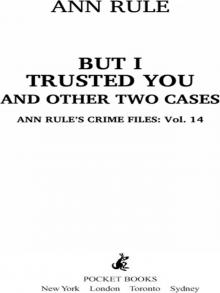 But I Trusted You and Other True Cases
But I Trusted You and Other True Cases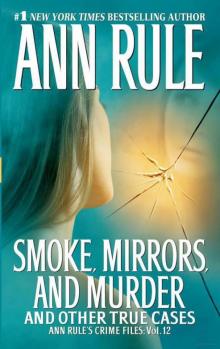 Smoke, Mirrors, and Murder and Other True Cases
Smoke, Mirrors, and Murder and Other True Cases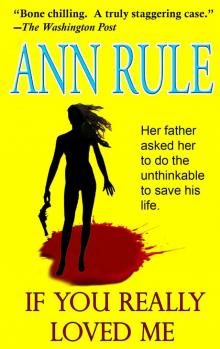 If You Really Loved Me
If You Really Loved Me Kiss Me, Kill Me and Other True Cases
Kiss Me, Kill Me and Other True Cases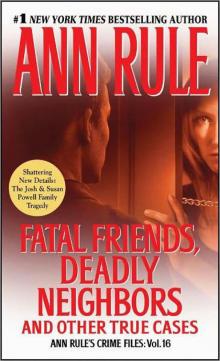 Fatal Friends, Deadly Neighbors and Other True Cases
Fatal Friends, Deadly Neighbors and Other True Cases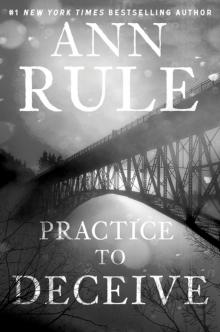 Practice to Deceive
Practice to Deceive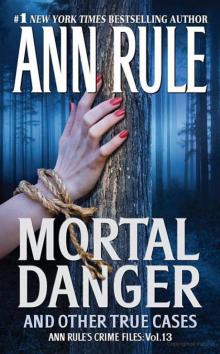 Mortal Danger and Other True Cases
Mortal Danger and Other True Cases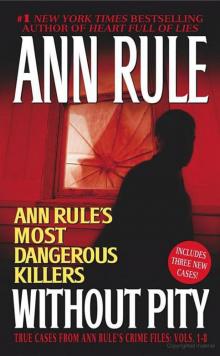 Without Pity: Ann Rule's Most Dangerous Killers
Without Pity: Ann Rule's Most Dangerous Killers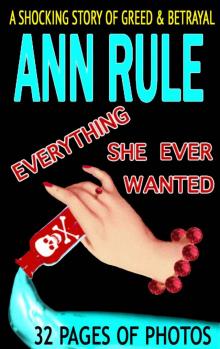 Everything She Ever Wanted
Everything She Ever Wanted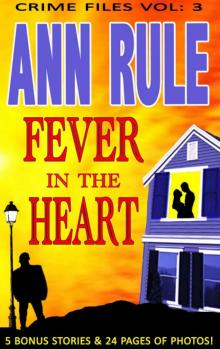 A Fever in the Heart and Other True Cases
A Fever in the Heart and Other True Cases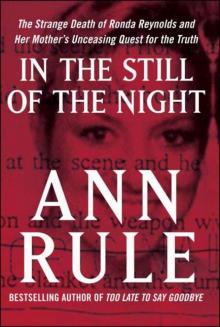 In the Still of the Night
In the Still of the Night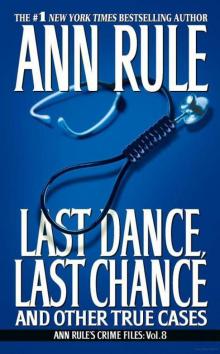 LAST DANCE, LAST CHANCE - and Other True Cases
LAST DANCE, LAST CHANCE - and Other True Cases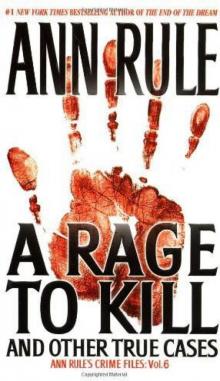 A Rage to Kill
A Rage to Kill The I-5 Killer
The I-5 Killer The Stranger Beside Me
The Stranger Beside Me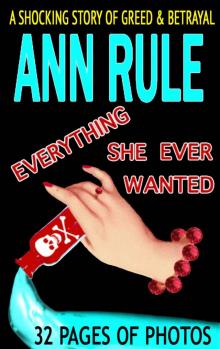 Everything She Ever Wanted: A True Story of Obsessive Love, Murder, and Betrayal
Everything She Ever Wanted: A True Story of Obsessive Love, Murder, and Betrayal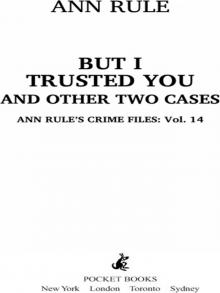 But I Trusted You
But I Trusted You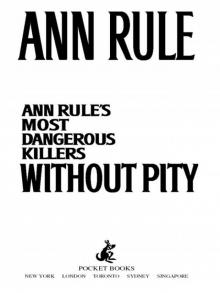 Without Pity
Without Pity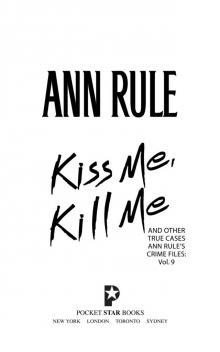 Kiss Me, Kill Me
Kiss Me, Kill Me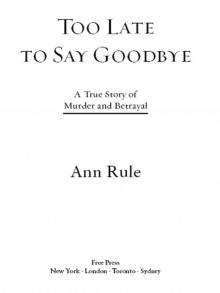 Too Late to Say Goodbye
Too Late to Say Goodbye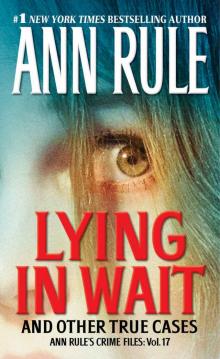 Lying in Wait
Lying in Wait Fatal Friends, Deadly Neighbors
Fatal Friends, Deadly Neighbors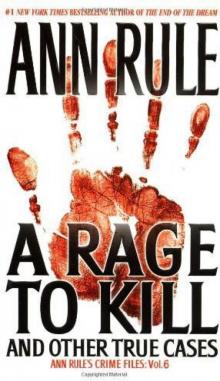 A Rage to Kill: And Other True Cases
A Rage to Kill: And Other True Cases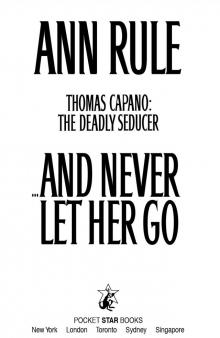 And Never Let Her Go
And Never Let Her Go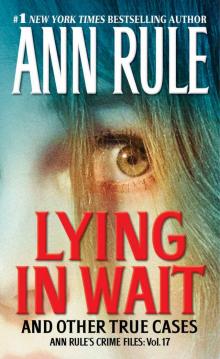 Lying in Wait Ann Rule's Crime Files Vol.17
Lying in Wait Ann Rule's Crime Files Vol.17 Blood Secrets: Chronicles of a Crime Scene Reconstructionist
Blood Secrets: Chronicles of a Crime Scene Reconstructionist No Regrets
No Regrets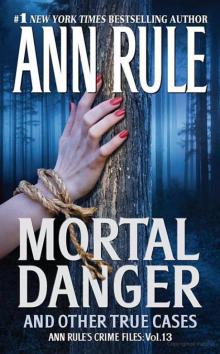 Mortal Danger
Mortal Danger But I Trusted You: Ann Rule's Crime Files #14
But I Trusted You: Ann Rule's Crime Files #14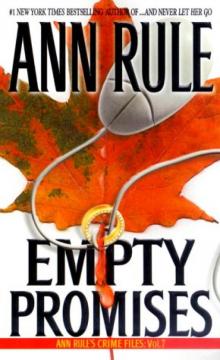 Empty Promises
Empty Promises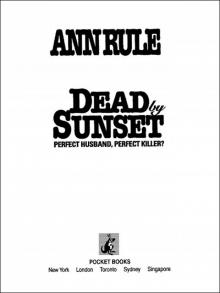 Dead by Sunset
Dead by Sunset Last Dance, Last Chance
Last Dance, Last Chance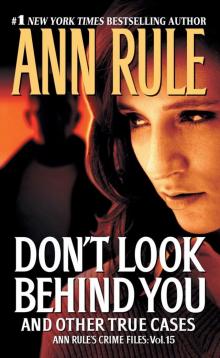 Don't Look Behind You
Don't Look Behind You